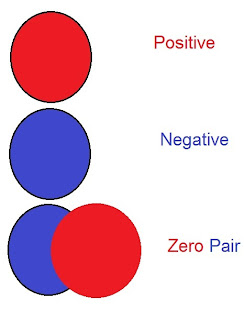This is a place for the community of learners in Room 8-16 to learn and enjoy math. It is an extension of the classroom making it accessible 24 hours a day, 7 days a week.
Tuesday, March 29, 2011
Big book of integers chapeter
Friday, March 25, 2011
Ryan's Term 2 Reflection
Filimon's Volume Post
r=4.1 11=h pi=3.14
r2 r x r = 16.81
Volume of this cylinder is 51.35.
#4 Pg 265
r2=10
h=23
pi=3.14
v=722.2
Thursday, March 24, 2011
Arween's Great Big Book Of Integers

Examples:-3 - (-7)=





Sign rule: when you are multiplying integers and you have 0 or even numbers of negatives, the answer is positive. When you are multiplying integers and you have odd numbers of negatives, the answer is negative.
Examples:
(+2) x (+3)=



(-2) x (-3)=

Partitive Division is how many groups are there in a number.

6 ÷ 2 =

Even: when numbers of negative integers are even the answer is positive
6 ÷ 2 = 3 There are no negative integers so that means the quotient is positive.
-6 ÷ (-2) = 3 There are two (even) negative integers that means the quotient is positive.
(-6) ÷ 2 = -3 There is a negative integer (odd) that means the quotient is negative.
6÷(-2) = -3 There’s one negative integer that means the quotient is negative.
Chapter 4 : Order of Operations with Integers
(+5) x (-3) + (-6) ÷ (+3)
-15 + (-6) ÷ (+3)
-15 + -2
-17
When answering Order of Operations remember B.E.M.D.A.S
B = Brackets
E = Exponent
M = Multiplication
D = Division
A = Addition
S = Subtraction
1. First answer numbers with brackets Ex. ( ) or [ ]
2. Then Answer Multiplication and Division
3. Then Addition and Subtraction
Roemer's Term 2 Reflection
Ishaka's Term 2 Reflection
Victoria's Great Big Book Of Integers Chapter 1
Here are some questions to help you out .......
-6-(-4) =
-10+6 =
6-7+2 =
14-(-3) =
-3-(-7) =
* important to try to do
*-3-7 =
*3-7 =
*3+7 =
*-3+7=
For those questions use a numberline to complete .... Good Luck !
Arween's 2nd Term Reflection
Term 2 Reflection
In Term 2 we’ve learned about Percents, Surface Areas, and Volumes. I did well on finding the surface area and finding the volume. The formulas of surface ares are easy to remember so as volumes. I struggled on percents. I had a hard time on changing fractions to percents. I keep messing up my calculating and mixing numbers to other numbers that’s in another column. But once I understand how to change fraction to percent I got better at it. I will do my work to understand the lecture more clearly to get a high grade on my quizzes.
Filimon's Term 2 Reflection
Paulo's Term 2 Reflection
Wednesday, March 23, 2011
Errol's Term 2 Reflection
In Term 2 I did good. I got an 87. I did really good in tests and quizzes. I found it easy to find surface area, volume of triangular prisms, cylinders and rectangular prisms, and percent.
I struggled on doing blogs posts and commenting. Even though I did better than last term, I still have a lot to do in term 3. This term I didn’t comment at all and had few blog post.
Next term(same as last term) I will try to comment on all blogs that I have to comment on and I will sign up for more blog posts.
This term I learned about surface area. Surface area is the sum of all faces of an object. For example: to find the surface area of a rectangular prism. Do L x W to one side, then multiply it by 2, and then do that to each side that’s different. Volume is the space on object occupies. For example: to find the volume of a rectangular prism, to the formula L x W x H. Percent means out of 100. For example: to find the percent from a decimal multiply by 100, so 0.64 x 100 = 64%.
There is a difference between volume and surface area. Surface area would be measuring the outside area of the object, while volume measures the inside area of an object. Both are similar because they’re both measuring an object.
Jocelle's Term Two Reflection
Jocelyn's Term two reflection
Jocelle’s Great Big Book of Integers
The sign rule for division is the same as the sign rule for multiplication, addition, and subtraction.
6 ÷ 2 = 3 There are no negative signs in the question, therefore the answer it positive.
(-6) ÷ 2 = -3 There is an odd number (one) of negative signs in the question, therefore the answer is negative.
6 ÷ (-2) = -3 There is one negative sign in the question, therefore the answer is negative.
Chapter 4 : Order of Operations with Integers
Use B.E.D.M.A.S. to solve equations except "E"